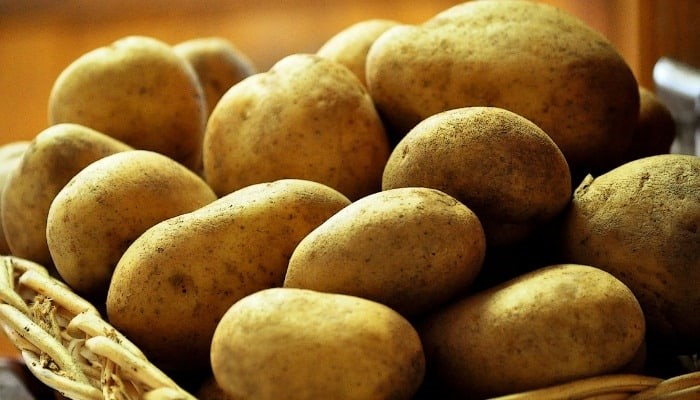The cultivation of potatoes, a staple crop for many, traditionally relies on soil-based methods. However, advancements in agricultural techniques have introduced hydroponics as a viable alternative. Hydroponic systems, which utilize nutrient-rich water in lieu of soil, offer a unique approach to potato cultivation. This method is especially beneficial in areas with limited ground space or soil that is unsuitable.
Moreover, hydroponically grown potatoes tend to mature faster than their soil-grown counterparts. This article will discuss the methods of growing potatoes using a hydroponic system, providing a comprehensive guide for those keen on adopting this innovative approach.
The Feasibility of Hydroponic Potatoes
While traditional gardening practices often involve cultivating potatoes in open air and soil, hydroponic systems offer an alternative. Even with limited space, such as a balcony, small room corner, or garage, one can successfully grow potatoes hydroponically. If the chosen location lacks natural light, “grow lights” become essential.
The Science Behind Hydroponic Potatoes
Hydroponic cultivation has garnered attention from various sectors, including space research organizations like NASA. The need to provide food for astronauts on extended missions has led to significant research in this area. Consequently, the ordinary gardener now has access to a wealth of information on hydroponic potato cultivation, a testament to human innovation.
Key Considerations for Successful Cultivation
Understanding the essentials of hydroponic potato cultivation is crucial. Potatoes, even the smaller varieties, demand substantial space due to their extensive root system and large leaves. It’s essential to provide them with a grow bed to accommodate the entire plant. Additionally, potatoes are susceptible to moisture damage. If left in overly humid conditions or stagnant water, they can rot. Thus, precision drip systems, which use water efficiently, are ideal for them.
Hydroponic Systems Suitable for Potatoes
- Nutrient Film Technique (NFT): This method, popular for seed potatoes, can be adapted for home gardens. The dry surface of the film promotes healthy tuber growth. It’s essential to ensure ample space for roots and leaves in this setup.
- Hydroponic Drip Irrigation: Potatoes thrive in large containers with a drip system. Such setups require less water than one might assume. With careful monitoring, one can achieve a bountiful harvest with minimal effort.
Potato Varieties for Hydroponics
Several potato varieties are suitable for hydroponic systems. Some popular choices include:
- Accent
- Casablanca
- Charlotte
- Gold Rush
- Jazzy
- Lady Christ
- Red Pontiac
- Winston
It’s advisable to start with sprouting potatoes from nurseries rather than grocery store potatoes, as they might be treated with anti-sprouting agents.
While personal taste plays a role in potato variety selection, some are better suited for hydroponic systems. For instance, fingerling potatoes are ideal due to their small tuber size. The Bellanita variety matures quickly, ready for harvest in about 60 days. With its disease-resistant red, waxy skin, the Norland variety is another excellent choice, maturing in approximately 70 days.
Preparing Seed Potatoes
Seed potatoes are small tubers specifically developed for gardening. They undergo rigorous disease screening to ensure consistent growth. Interestingly, one can also use store-bought potatoes, provided they have multiple eyes. One can maximize yield from a single seed by slicing such a potato. After cutting around the sprout, leaving about 2.5 centimeters of space, the seed pieces should be left overnight in an excellent, dry spot before planting.
The Hydroponic Potato Cultivation Process
Hydroponic cultivation offers a year-round yield, healthier plants, and complete environmental control. Moreover, indoor hydroponic systems present fewer challenges with pests, bacteria, and diseases.
System Selection: While most home hydroponic systems are designed for small crops and leafy greens, potatoes require a different approach due to their tuberous nature. The key considerations include:
- A support system that can bear the weight of growing tubers.
- Larger and deeper grow beds than typical hydroponic setups.
- DIY systems, hybrid setups, and Nutrient Film Techniques (NFT) with added support are recommended for potato cultivation.
Nutrient Solution and Growth Conditions:
- pH Level: A pH level of 6.0 is ideal for hydroponic potatoes.
- Water Temperature: Maintain a temperature range of 70°F to 75°F.
- Light: Potatoes require a light cycle of 6 to 12 hours. If grown indoors without adequate natural light, grow lights are essential.
- Growing Medium: Perlite, peat, and vermiculite are the preferred growing mediums for hydroponic potatoes.
Pest and Disease Management:
Growing potatoes hydroponically indoors reduces the risk of pests, bacteria, and diseases. However, it’s essential to monitor for any signs of infestations and address them promptly. Waterborne diseases, power outages, and the initial setup costs are challenges to consider.
Harvesting and Post-Harvest:
The duration for hydroponic potatoes to reach maturity varies based on the species and environmental conditions, typically 70 to 90 days. Once mature, the potatoes can be harvested and stored. It’s crucial to monitor for signs indicating that the potatoes are ready for harvest to ensure optimal yield and quality source.
Future Trends:
Hydroponic cultivation is gaining traction, with research and innovations continuously emerging. NASA scientists have shown particular interest in hydroponic potato cultivation, considering it a potential food source for space explorers on extended missions. This research has provided valuable insights into the requirements and best practices for hydroponic potato cultivation source.
Takeaway
Hydroponic potato cultivation, while challenging, is a rewarding endeavor. One can harvest successfully with the proper knowledge, equipment, and care. The future of gardening lies in such innovative methods, allowing for efficient use of resources and space.

Hey! I simply would like to give an enormous thumbs up for the nice data you have right here on this post. I might be coming back to your blog for extra soon.
Thank you so much for your kind words!